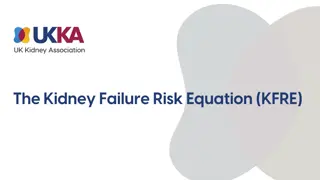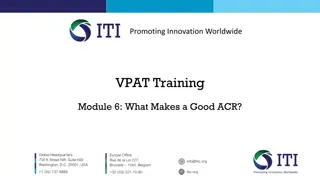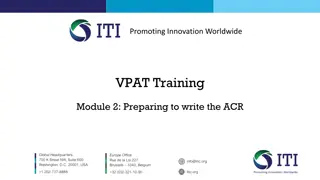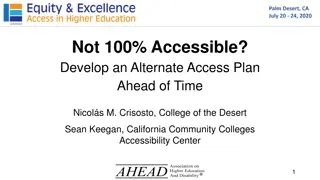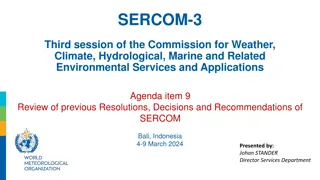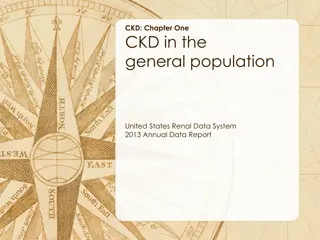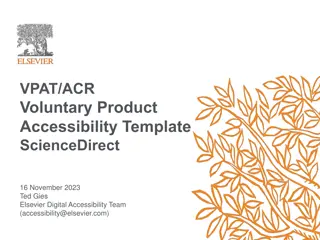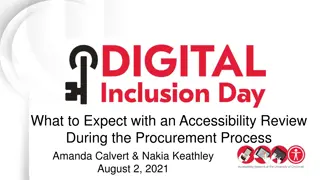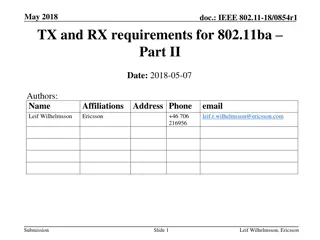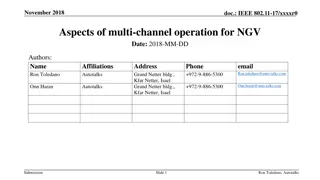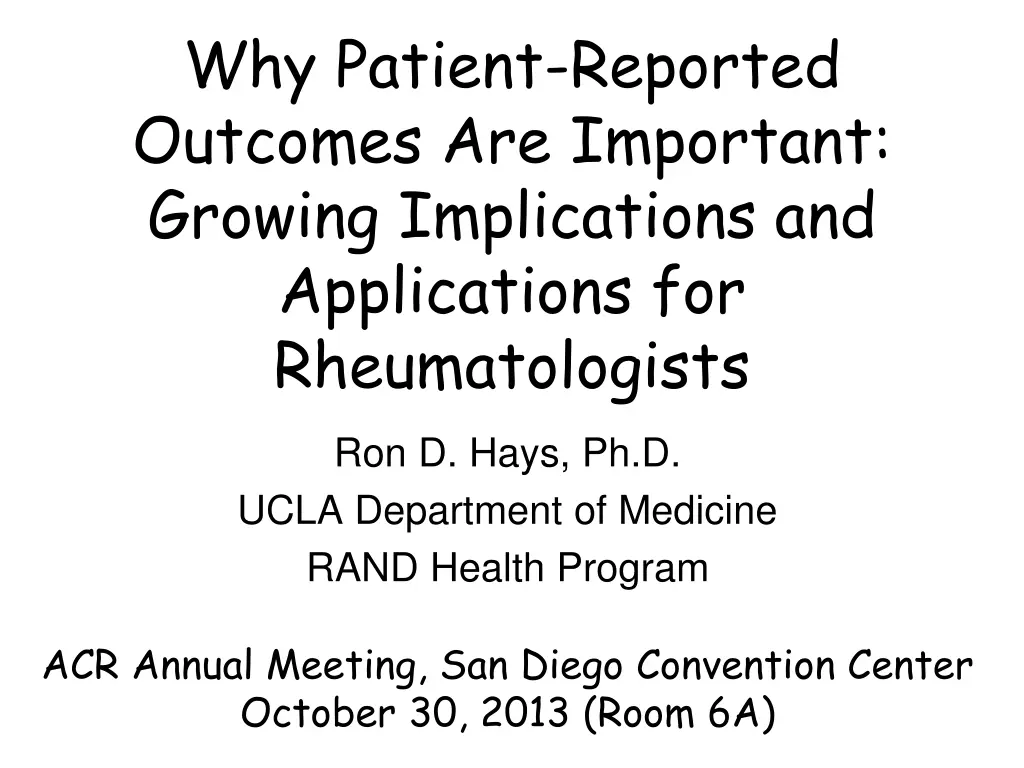
Importance of Patient-Reported Outcomes in Rheumatology
Discover why patient-reported outcomes are crucial for rheumatologists, with a focus on implications and applications. Learn about evidence-based medicine, U.S. healthcare issues, measuring care effectiveness, and health outcome measures, including patient-reported measures and health-related quality of life.
Download Presentation

Please find below an Image/Link to download the presentation.
The content on the website is provided AS IS for your information and personal use only. It may not be sold, licensed, or shared on other websites without obtaining consent from the author. If you encounter any issues during the download, it is possible that the publisher has removed the file from their server.
You are allowed to download the files provided on this website for personal or commercial use, subject to the condition that they are used lawfully. All files are the property of their respective owners.
The content on the website is provided AS IS for your information and personal use only. It may not be sold, licensed, or shared on other websites without obtaining consent from the author.
E N D
Presentation Transcript
Why Patient-Reported Outcomes Are Important: Growing Implications and Applications for Rheumatologists Ron D. Hays, Ph.D. UCLA Department of Medicine RAND Health Program ACR Annual Meeting, San Diego Convention Center October 30, 2013 (Room 6A)
Disclosures No financial relationships related to this presentation.
Evidence-based Medicine Cella, D., et al. (2010). Initial item banks and first wave testing of the Patient-Reported Outcomes Measurement Information System (PROMIS) network: 2005-2008. Journal of Clinical Epidemiology, 63 (11), 1179-1194. Hahn, E. A., et al. (2007). Precision of health-related quality-of-life data compared with other clinical measures. Mayo Clin Proceedings, 82 (10), 1244-1254. Hays, R. D., Reeve, B. B., Smith, A. W., & Clauser, S. B. (2013, epub). Associations of cancer and other chronic medical conditions with SF-6D preference-based scores in Medicare beneficiaries. Quality of Life Research. Khanna, D., Krishnan, E., Morgan DeWitt, E., Khanna, P. P., Spiegel, B., & Hays, R. D. (2011). The future of measuring patient reported outcomes in rheumatology. Arthritis Care and Research, 63, S486-490.
U.S. Health Care Issues ACE Signs Access to care ~ 50 million people without health insurance Costs of care Expenditures ~ $ 2.7 Trillion Effectiveness (quality) of care 4
How Do We Know If Care Is Effective? Effective care maximizes probability of desired health outcomes Health outcome measures indicate whether care is effective Cost Effectiveness 5
Health Outcomes Measures Traditional clinical endpoints Survival Clinical/biological indicators Rheumatoid factor Blood pressure Hematocrit Patient-Reported Outcomes 6
Patient-Reported Measures (PRMs) Mediators Health behaviors (adherence) Health Care Process Reports about care (e.g., communication) Outcomes (PROs) Patient satisfaction with care Health-Related Quality of Life (HRQOL) 7
HRQOL in SEER-Medicare Health Outcomes Study (n = 126,366) SF-6D (0-1 possible range) by Condition 0.82 0.81 0.8 0.79 0.78 0.77 0.76 0.75 0.74 0.73 No Condition Hypertension Arthritis-Hand Stroke COPD Arthritis-Hip Controlling for age, gender, race/ethnicity, education, income, and marital status. 65 8
Health-Related Quality of Life (HRQOL) How the person FEELs (well-being) Emotional well-being Pain Energy What the person can DO (functioning) Self-care Role Social 10
Does your health now limit you in walking more than a mile? (If so, how much?) Yes, limited a lot Yes, limited a little No, not limited at all 11
HRQOL is Not Quality of environment Type of housing Level of income Social Support 12
HRQOL is Reliable and Predictive of (5-year) Mortality 17 18 16 14 % 12 10 Dead 8 6 5 6 4 2 2 0 (n=676) (n=754) (n=1181) (n=609) <35 35-44 45-54 >55 SF-36 Physical Health Component Score (PCS) T score Ware et al. (1994). SF-36 Physical and Mental Health Summary Scales: A User s Manual. 13
Does your health limit you in vigorous activities? Less Limitation
Does your health limit you in walking one block? Less Limitation
Item Responses and Trait Levels Person 1 Person 2 Person 3 Trait Continuum Item 1 Item 2 Item 3 www.nihpromis.org
Response Burden Reduced Paper and pencil rules of thumb 3-5 items per minute PROMIS computer administration to general population 8-12 items per minute Scleroderma patients at UCLA 6 items per minute 18
Reliability Target for Use of Measures with Individuals Reliability ranges from 0-1 0.90 or above is goal Reliability = 0.90 when SE = 3.2 T-scores (mean = 50, SD = 10) Reliability = 1 (SE/10)2 T =50 + (z * 10)
PROMIS Physical Functioning vs. Legacy Measures 10 20 30 40 50 60 70
In the past 7 days I was grouchy [1st question] Never [39] Rarely [48] Sometimes [56] Often [64] Always [72] Estimated Anger = 56.1 SE = 5.7 (rel. = 0.68)
In the past 7 days I felt like I was ready to explode [2nd question] Never Rarely Sometimes Often Always Estimated Anger = 51.9 SE = 4.8 (rel. = 0.77)
In the past 7 days I felt angry [3rd question] Never Rarely Sometimes Often Always Estimated Anger = 50.5 SE = 3.9 (rel. = 0.85)
In the past 7 days I felt angrier than I thought I should [4th question] - Never Rarely Sometimes Often Always Estimated Anger = 48.8 SE = 3.6 (rel. = 0.87)
In the past 7 days I felt annoyed [5th question] Never Rarely Sometimes Often Always Estimated Anger = 50.1 SE = 3.2 (rel. = 0.90)
In the past 7 days I made myself angry about something just by thinking about it. [6th question] Never Rarely Sometimes Often Always Estimated Anger = 50.2 SE = 2.8 (rel = 0.92)
Defining a Responder: Reliable Change Index (RCI) X X 2 1 ( 2 ( ) ) SE RCI >=1.96 is statistically significant individual change.. 27
Thank you! Contact Information: drhays@ucla.edu (310-794-2294) Powerpoint file available at: http://gim.med.ucla.edu/FacultyPages/Hays/

